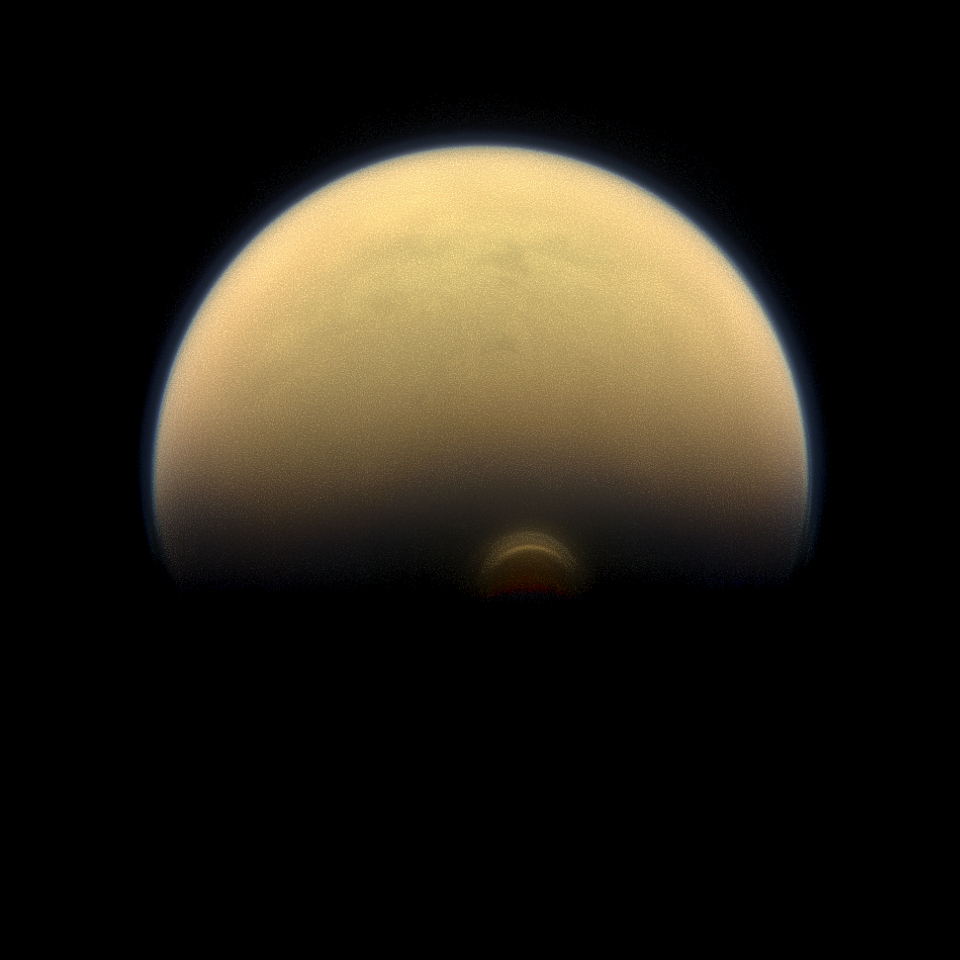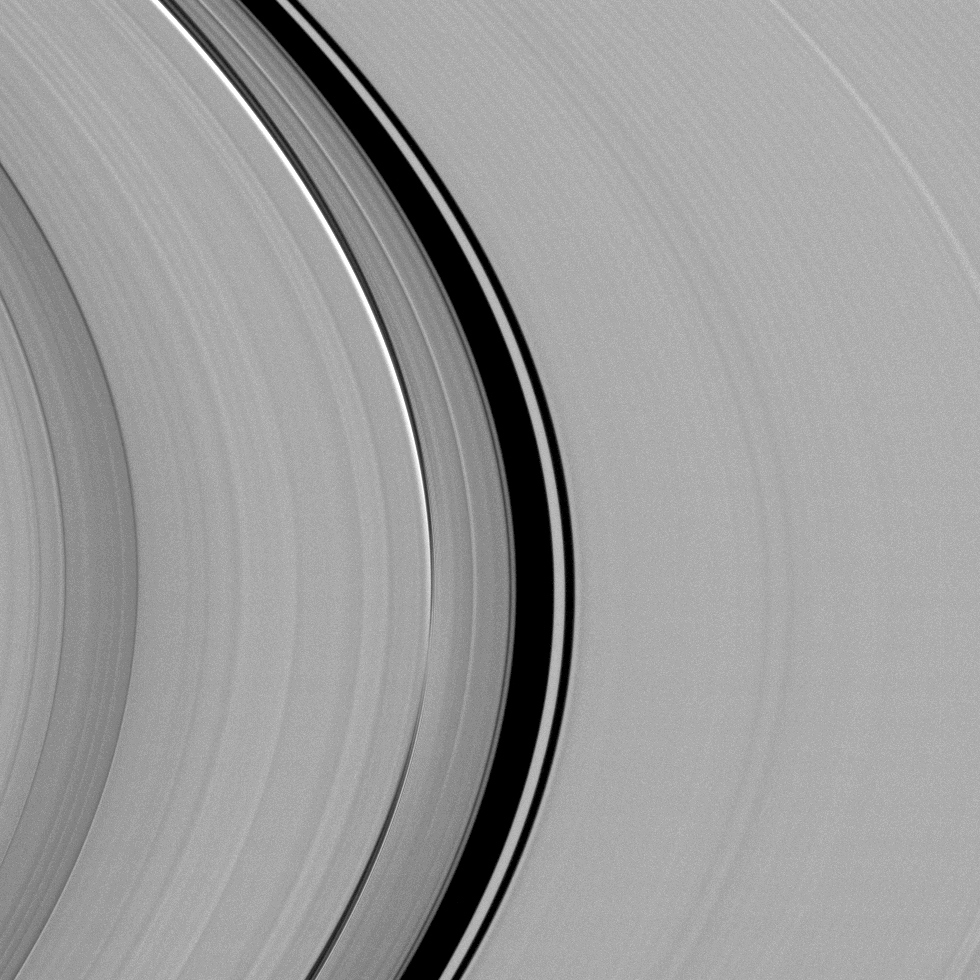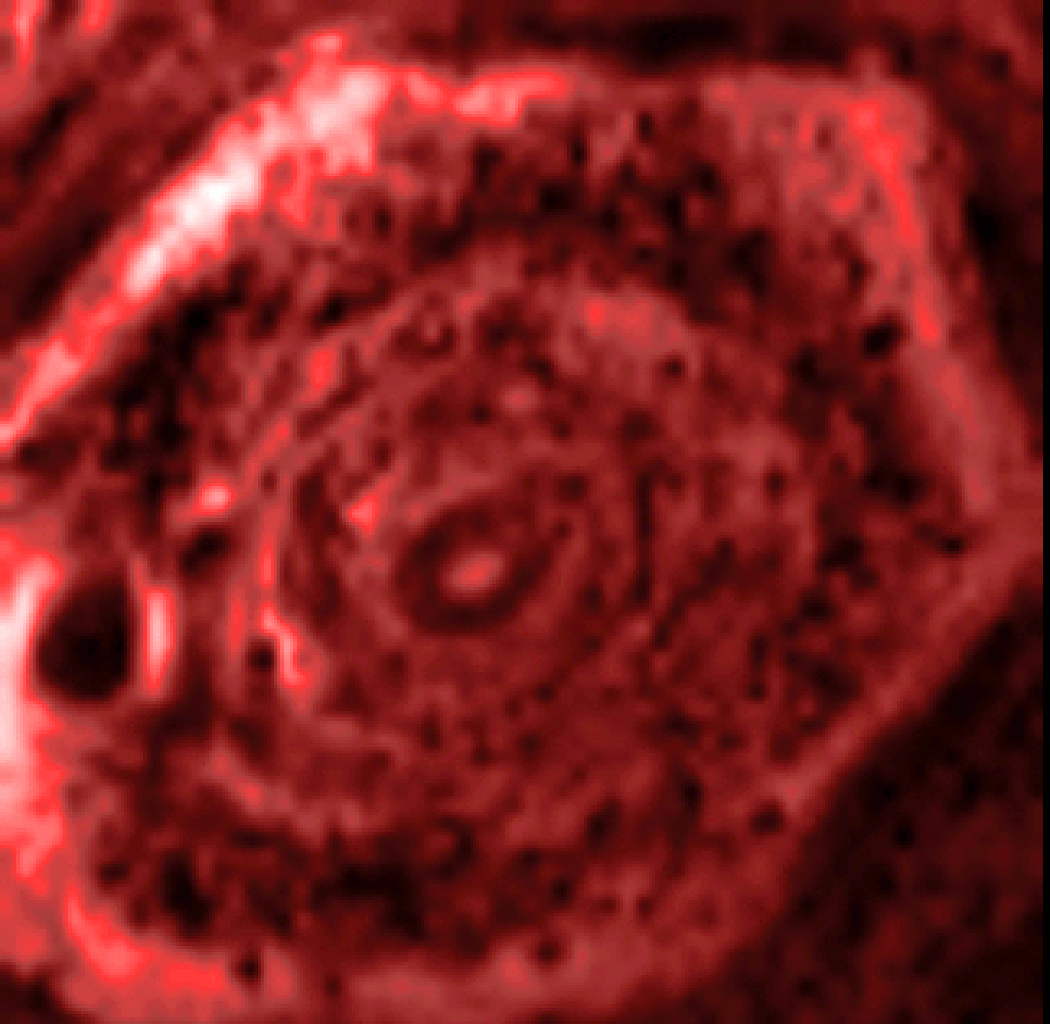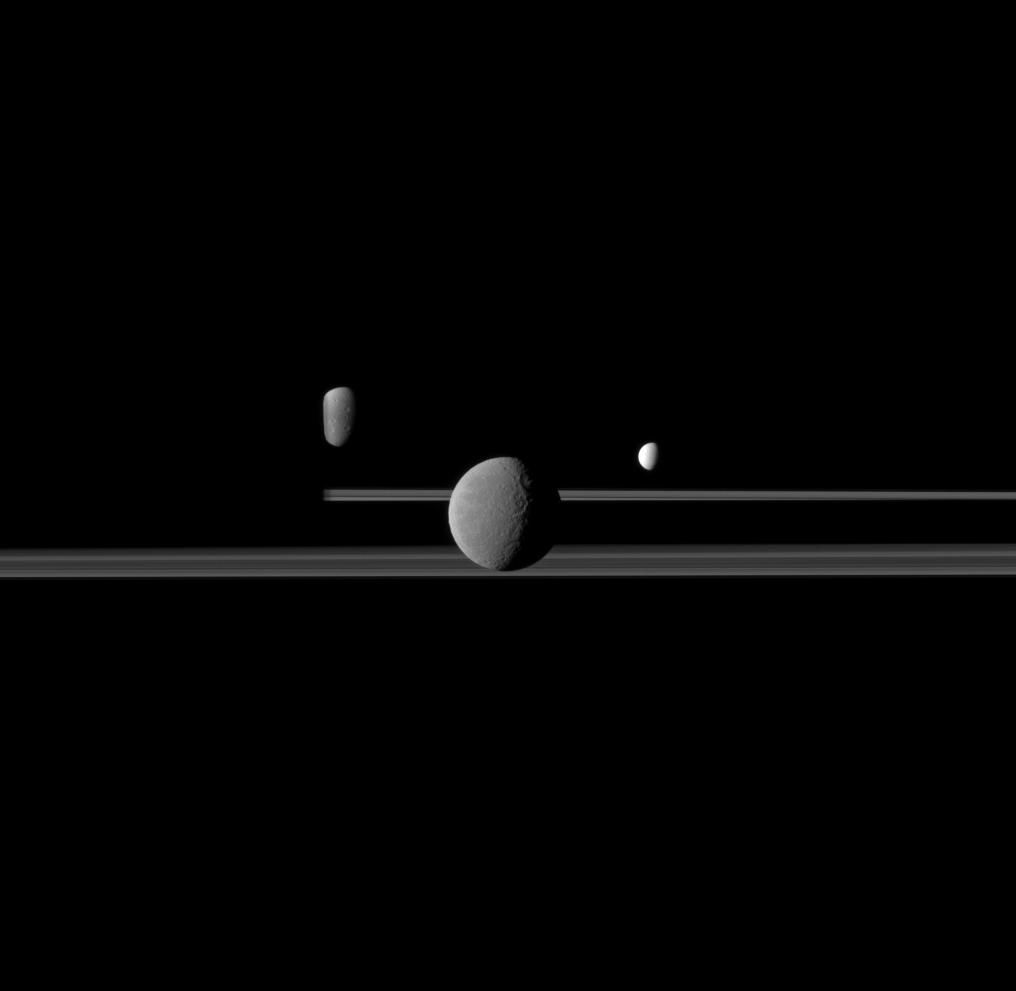Amazing Saturn Photos From NASA's Cassini Orbiter
Frozen in Time: Saturn's Enceladus
NASA's Cassini spacecraft captures a still and partially sunlit Enceladus, the icy moon of Saturn, in this image released on Dec. 23, 2013. This image, taken on April 7, 2013, shows the side of Enceladus (313 miles or 504 kilometers across) that faces backward in the moon's orbit around Saturn. The view was acquired at a distance of approximately 123,000 miles (198,000 kilometers) from Enceladus. [Read the Full Story Here]
A Stormy Arc on Titan
The south polar vortex at Saturn's moon Titan stands out in the dark south against the orange and blue haze layers as seen by NASA's Cassini spacecraft. This image suggests that the polar vortex clouds form at a much higher altitude, where sunlight can still reach, than the surrounding haze. This image, released on Dec. 23, 2013, was taken on July 30 at a distance of 895,000 miles (1.441 million kilometers) from Titan. [Read the Full Story Here]
Titan's Land of Lakes (Annotated)
This annotated view of Titan as seen from NASA's Cassini spacecraft shows the largest hydrocarbon lakes on the Saturn moon, including the largest sea Kraken Mare. Titan's lakes are named for mythological creatures. The images for this view, released on Dec. 23, 2013, were taken on Oct. 7. [Read the Full Story Here]
Ring Rhythms of Saturn
A dynamical interplay between Saturn's largest moon, Titan, and its rings is captured in this view from NASA's Cassini spacecraft taken on Sept. 20, 2009 and released Dec. 23, 2013. At every location within Saturn's rings, particles orbit with a particular period, or rhythm. This image is focused on two separate and nearby locations in the rings where those rhythms are in synchrony with different aspects of Titan's 16-day orbit, creating signature effects that point from a distance back towards Titan. [Read the Full Story Here]
Titan's Hazy Halo
The hazy blue halo of Saturn's largest moon Titan is seen here by NASA's Cassini spacecraft in an image captured on Nov. 3, 2013 and released on Dec. 23. This view looks towards the side of Titan (3,200 miles or 5,150 kilometers across) that leads in its orbit around Saturn. North on Titan is up and rotated 40 degrees to the left. Images taken using red, green and blue spectral filters were combined to create this natural-color view.
Saturn Mosaic in Natural Light
NASA's Cassini spacecraft revealed this view of the Saturn with its main rings. The planet glows in natural color, as human eyes would see it. 36 images in three color filters combine in this mosaic, obtained by Cassini's imaging science subsystem on Oct. 10, 2013. [Read the Full Story Behind this Photo Here]
In Full View: Saturn's Streaming Hexagon
This colorful view from NASA's Cassini mission is the highest-resolution view of the unique six-sided jet stream at Saturn's north pole known as "the hexagon." Image obtained on Dec. 10, 2012 and released Dec. 4, 2013. [See video of Saturn's bizarre hexagon here]
Breaking space news, the latest updates on rocket launches, skywatching events and more!
Hexagon in Silhouette
This still image from an infrared movie from NASA's Cassini mission shows the churning of the curious six-sided jet stream at Saturn's north pole known as "the hexagon." The image was obtained on June 14, 2013 and released Dec. 4, 2013. [See video of Saturn's bizarre hexagon here]
Hexagon in Silhouette, Polar View
This still image from a black-and-white movie from NASA's Cassini mission shows a polar projection of the curious six-sided jet stream at Saturn's north pole known as "the hexagon" in the infrared. The images were obtained on June 14, 2013 and released Dec. 4, 2013. [See video of Saturn's bizarre hexagon here]
Three Moons of Saturn
The Cassini spacecraft observes three of Saturn's moons set against the darkened night side of the planet. Saturn is present on the left this image but is too dark to see. Rhea (1,528 kilometers, or 949 miles across) is closest to Cassini here and appears largest at the center of the image. Enceladus (504 kilometers, or 313 miles across) is to the right of Rhea. Dione (1,123 kilometers, or 698 miles across) is to the left of Rhea, partly obscured by Saturn. Image taken April 25, 2011. Released on March 26, 2013. [Full Story]

Space.com is the premier source of space exploration, innovation and astronomy news, chronicling (and celebrating) humanity's ongoing expansion across the final frontier. Originally founded in 1999, Space.com is, and always has been, the passion of writers and editors who are space fans and also trained journalists. Our current news team consists of Editor-in-Chief Tariq Malik; Editor Hanneke Weitering, Senior Space Writer Mike Wall; Senior Writer Meghan Bartels; Senior Writer Chelsea Gohd, Senior Writer Tereza Pultarova and Staff Writer Alexander Cox, focusing on e-commerce. Senior Producer Steve Spaleta oversees our space videos, with Diana Whitcroft as our Social Media Editor.










